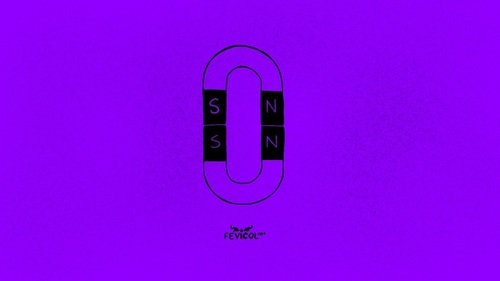If I ask you to name the most trusted jeweller in India, the first name that would come to your mind would most likely be Tanishq.
Tanishq is an iconic jewellery brand of the Tata Group that was founded in 1994.
The jewellery business of Titan Company, Tanishq’s parent company:
- earned a revenue of INR 23,268 crores in FY22,
- and accounts for 88% of Titan’s total revenue![1]
Tanishq is truly a jewel in Tata’s crown. And, it has been able to buildd trust with the Indian consumers especially women by consistently providing quality products and services delivery.
But the journey has been far from easy for Tanishq. The company had to battle the local jewellers who were deeply entrenched in the market.
So, how did Tanishq establish its brand & trust in the Indian market?
Well, let’s find out!
How it all started
By 1990, Titan had established itself as the market leader in watches. They had literally changed the consumer mindset from “watches as commodities” to “watches as a fashion accessory”. The time was ripe for a cultural change across the organisation.
The next phase of Titan’s growth was marked by the introduction of multiple new brands, each distinct in character and appeal. The mission was to create a category of products that would be the first choice of every consumer in India.
Tanishq, the first product brand, was launched in 1994 with the aim of bringing about a change in the way gold jewellery was designed, sold and perceived.
You see, Titan realised that:
- jewellery in India had been a largely unorganised sector,
- the local jeweller was the absolute expert and the consumer had to rely entirely on their knowledge and taste,
- there was no easy way for the consumer to compare products or prices and,
- there were no established quality standards.
The goal was to change all of that.
They brought in a whole new range of gold jewellery, designed to be worn every day. They trained their sales staff to be knowledgeable and courteous. They made the buying experience fun and relaxing. And they made gold jewellery affordable for everyone.
But, Titan & Tanishq were in for a big surprise.
Tanishq’s BIG problems
Tanishq first started selling 18 karat gold studded watches.
Now, there are two key points we need to know about gold jewellery.
- The karat rating for gold indicates its purity. So, 24 karat is the purest form of gold with 99.99% purity. It’s of course the most expensive as well.
18 karat gold then would have 18/24 x 99.99 = ~75% pure gold and would obviously be cheaper than 24 karat gold.
- The lower the karat rating for gold, the easier it is to mould it into fancy or complex designs. Lower karat gold jewellery is also more durable and scratch resistant.
So, in its early years, Tanishq launched 18 karat gold jewellery with the hope that lower cost, more durable pieces and modern designs would motivate people to spend more in its shops.
But, Tanishq missed out on two key points about Indian consumers.
Problem #1: Gold is not just an ornament, but an investment
In India, gold jewellery is not just purchased for personal use. But it serves multiple key purposes — investment, social status, wedding gifts and even good luck.
Gold was and still is perceived as a store of value and wealth. So, people are keen on purchasing gold with a higher purity or karat rating.
Jewellery design is always a secondary concern for Indian consumers. They are happy buying simple designs with higher gold purity than fancy modern designs with lower karat rating.
Problem #2: Buy jewellery only from trusted local jewellers
Indian consumers prefer to purchase gold from trusted local jewellers, who have been in the business for decades.
More importantly, people would buy from the same local jeweller across generations and have a lot of trust in them.
In such a scenario, selling 18 karat gold jewellery led to losses year after year for Tanishq. By 2000-01, they had accumulated losses around INR 150 crores[2]. The jewellery division was literally bleeding Titan!
The masterstroke to win over India’s gold market
Once Tanishq figured out these problems, they immediately shifted to selling 22 karat gold jewellery.
But that was only part of the problem. Tanishq still had to do something BIG to remove the blind faith people had in local jewellers and win over their trust.
This is where Tanishq played its masterstroke.
The Karatmeter experiment
Now, Tanishq was aware that while people trusted their local jewellers, they still had no way of verifying the purity and quality of the gold jewellery purchased. The local jeweller was the absolute expert and people had to just blindly trust their word.
In such a scenario, it was easy for local jewellers to increase their margins by selling impure gold or gold of a lower purity than what was promised. In fact, a survey by the National Council of Applied Economic Research (NCAER) had found that nearly 44% of gold jewellery sold in India was of 18 carat or lower purity, as against the 22 carat purity that is considered standard.
Tanishq decided to tackle this problem head on. They introduced the Karatmeter in their stores. The Karatmeter is a machine that can test the purity of gold in a matter of seconds.
The idea was that by making the Karatmeter available to customers, Tanishq would be able to buildd trust and credibility. Customers could also walk in and test the purity of their existing jewellery.
The response was overwhelming. Customers were queueing up to use the machine and were shocked with the results. Out of all the pieces tested, ~60% of them were found to have lesser purity than claimed![3]
Half the job was done for Tanishq — people had lost trust in their local jewellers. But, Tanishq was yet to buildd its own trust among consumers.
“Impure to Pure” scheme
After installing the Karatmeters, Tanishq came up with a generous exchange scheme, called “Impure to pure”.
Here’s how the scheme worked:
- You step into a Tanishq store with your jewellery to check the purity of gold.
- If the purity is between 19 karat to 22 karat i.e. lesser than the standard of 22 karat, Tanishq would upgrade your jewellery to 22 karat for free!
- All you have to do is pay the making charges for the new jewellery and Tanishq would bear the cost of the gold upgrade.
The “Impure to pure” scheme was a resounding success. It drew a lot of people into the store, many of whom had never visited a Tanishq outlet before.
More importantly, it helped establish Tanishq as a brand that is not just about selling jewellery, but also about ensuring that its customers get the best quality products.
But, how much did this cost Tanishq?
Before we get into the math, let’s quickly outline the process of jewellery conversion:
- Tanishq takes in the old piece of jewellery and separates pure gold out of it. So, they would get ~79% pure gold from a 19 karat jewellery.
- They would then add in more pure gold to make it reach 91.67% or 22 karat purity. In the above example, that would mean adding in ~13% of pure gold to the 19 karat jewellery.
Cost to upgrade gold for a single customer
Right then, let’s estimate how much it cost Tanishq to upgrade a 10-gram piece of gold jewellery for a single customer.
- Cost of a 10-gram gold piece = Cost of 10-gram gold + Making charges
Since the making charges are borne by the customer, Tanishq has to primarily pay for the cost difference of the gold upgrade.
So, cost for Tanishq = Cost of 10-gram gold at 22 karat purity - Cost of 10-gram gold at the old jewellery’s purity.
- Since the scheme exchanged gold between 19 karat to 22 karat, we assume that on average, (19 + 22) / 2 = 20.5 karat jewellery was exchanged.
- Cost of 10-gram 24 karat gold in 2003-04 = INR 5600[4]
Cost of 10-gram 22 karat gold = 22/24 x 5600 = INR 5133
Cost of 10-gram 20.5 karat gold = 22/24 x 5600 = INR 4783
- So, cost for Tanishq = 5133 - 4783 = INR 350
INR 350 seems like a tiny cost to acquire a customer for life! It seems even more insignificant if you look at it as the cost of building a brand in a highly trust based market.
Money made from a single customer
But to get an even better perspective, let’s quickly look at how much money Tanishq made on every customer conservatively.
- Let’s assume a customer purchases one 10-gram 22 karat gold piece from Tanishq.
Cost of one 10-gram 22 karat gold piece = Cost of 10-gram 22 karat gold + Making charges.
- Tanishq’s making charges vary between 8-31%[5]. Let’s take a conservative estimate of 15% making charges.
So, cost of one 10-gram 22 karat gold piece = 5133 + 15% of 5133 = INR 5903
- Now, Tanishq has a 25-26% gross margin[6]. Let’s say, Tanishq makes 5-10% net margin or profit on jewellery.
5% margin ⇒ 5903 x 5% = ~INR 295
10% margin ⇒ 5903 x 10% = ~INR 590
So, Tanishq actually makes back all the money it spent on a customer in the “Impure to pure” scheme right away, if the customer ends up purchasing jewellery from Tanishq!
Trust stays forever!
Tanishq’s Karatmeter experiment changed the way consumers think about jewellery. It made them feel that Tanishq is willing to stand for its quality commitment no matter what.
As a result, Tanishq built trust with the Indian consumers. A trust that showed that the brand stands for quality and transparency. A trust that stays forever!
But Tanishq didn’t stop at this. The brand took this learning further and applied it to the entire product line. From the design of the jewellery to the communication, everything was aligned to the consumer’s need for quality and transparency.
The result? Tanishq is now the most loved jewellery brand in India![7]
%20(1)%20(1)%20(1).jpg)







%20(1).jpg)